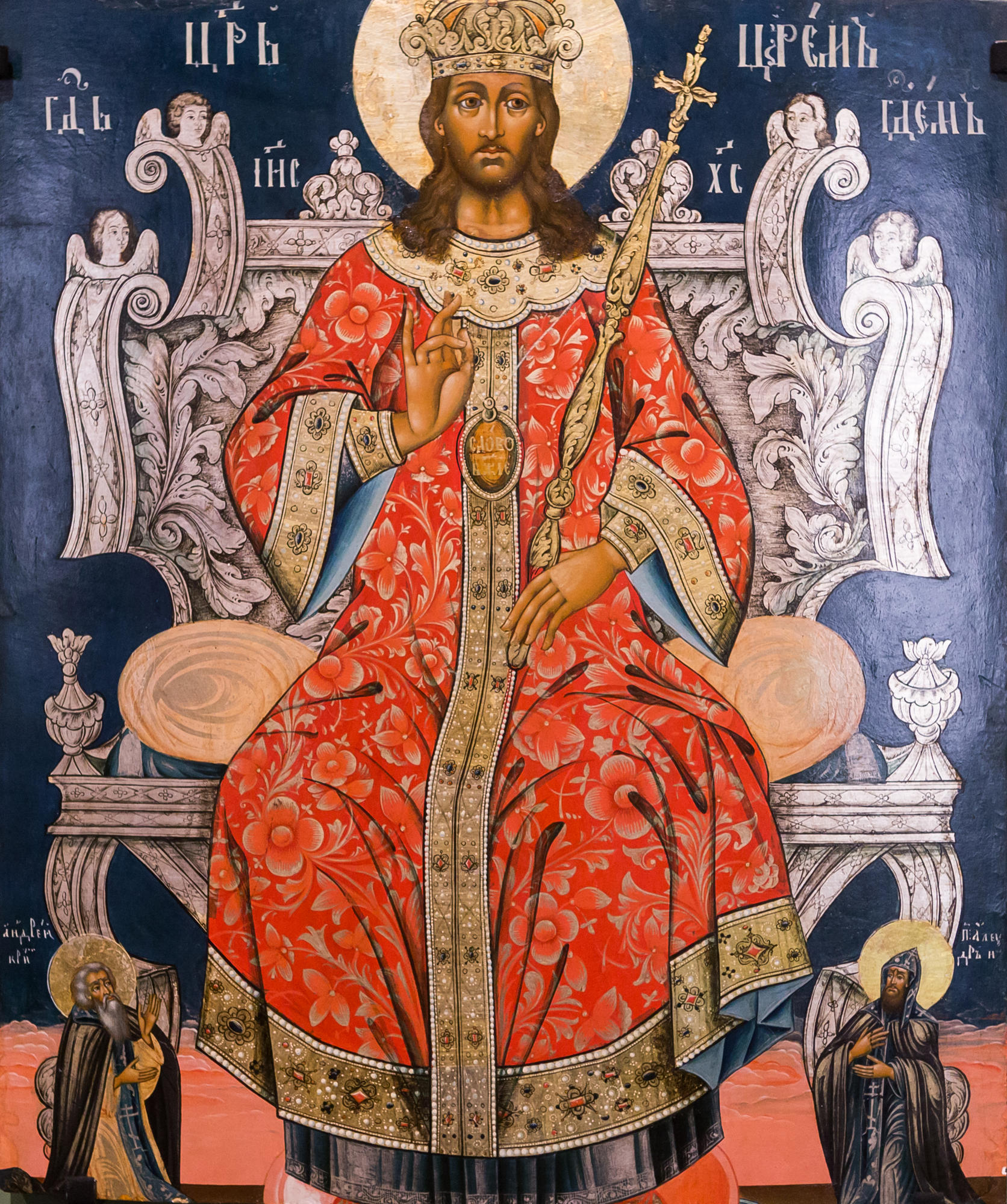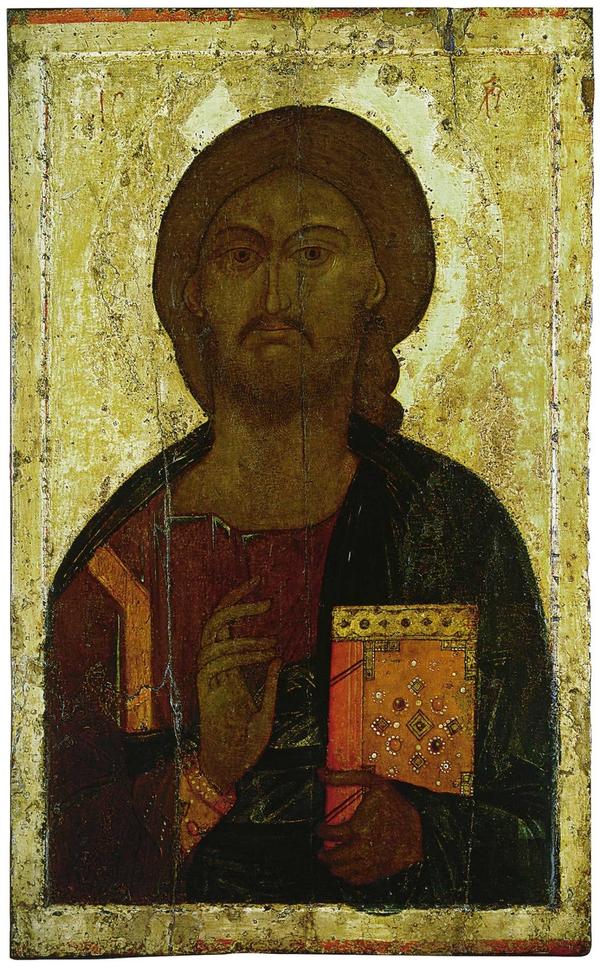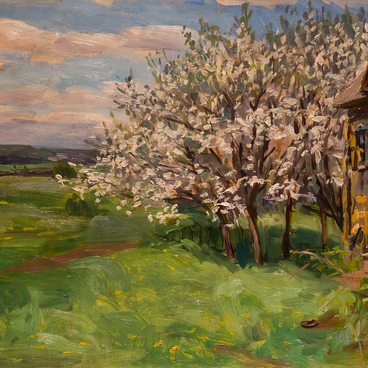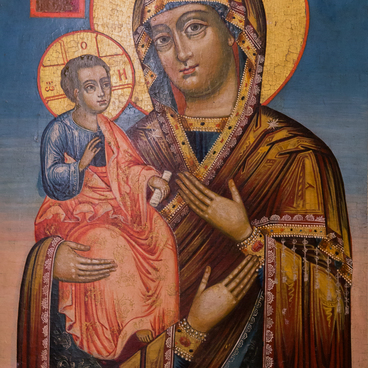The image of the Pantorcrator is the central image of the iconography of the Christ. The literate translation of the word Pantocator from Greek is ‘the ruler of everything’. This title emphasized the omnipotence of Crist the Savior. That is why on such icons the Christ is depicted as the Heavenly King and Judge on the throne.
Enthroned Pantocrator
Creation period
the second half of the 18th century
Dimensions
83x70,5 cm
Technique
wood, levkas (primer), tempera
Collection
3
Open in app#1
Unknown artist
Enthroned Pantocrator
#4
The icon from the New Jerusalem Museum depicts regally dressed Jesus sitting on the throne. He has a crown on his head and a scepter in his left hand, which are the attributes of power. Disproportionately small St. Andrew of Crete and Alexander Nevsky are kneeling by the Savior’s feet. Their depiction most likely means they were patrons of the family having commissioned the icon.
#6
In addition to the traditional iconography, this icon also bears the sigs of the baroque style popular at that time. For example, this is reflected in the intense colours characteristic of that style: red, blue, pink and yellow. The carved silver throne is also painted in the baroque style.
#5
Another version of the same style. End of the 14th century. Part of the holdings of the State Museum Reserve of History and Architecture
The icon bears an inscription (The King of Kings and the Lord of Lords). This phrase dates back to the text of the Revelation, the last book of the New Testament. According to this book, the Christ appears in the clouds wearing red clothes with several wreaths on his head, with an iron staff in his hand and a sharp sword. According to the writing, the two-edge sword was coming out of His mouth being the symbol of the Word of God as the law. This is how the Pantacrator was usually depicted in the West European art.
In 1670-s the artists of the Armory adopted such iconography, and it became widespread in the hinterlands in the 18th century.
In 1670-s the artists of the Armory adopted such iconography, and it became widespread in the hinterlands in the 18th century.
#7
However, the painters often depicted an abbreviated version of the story. They did not depict the sword, but focused on the omnipotence of the Crist portraying Him with the attributes of the Heavenly King’s power.
#8
New Jerusalem Museum
read morehide
00:00
00:00
1x
Enthroned Pantocrator
Creation period
the second half of the 18th century
Dimensions
83x70,5 cm
Technique
wood, levkas (primer), tempera
Collection
3
Open in app
Share




